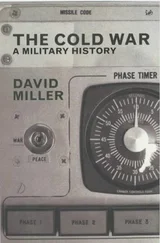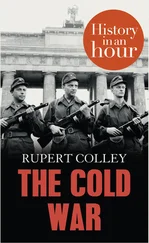SG Warburg was not a major distributor of Yankee bonds, but Siegmund Warburg was familiar with the market through his family's relationship with the US investment bank Kuhn, Loeb & Co. His cousins Paul and Felix Warburg were both senior partners at the New York firm and Siegmund himself served as a partner and Executive Director of Kuhn Loeb from 1953 until 1964. As far back as 1958, Warburg had bemoaned the fact that American underwriters were receiving the lion's share of fees on Yankee issues, notwithstanding the fact that most of the distribution was carried out by European banks. In the early 1960s, he and his partners set out to overcome the barriers to launching a Eurobond out of London. The borrower that served as the test case with the British authorities was the builder and owner of Italy's motorway network, Autostrade. 44
The reason why Autostrade was chosen traces back to its relationship with the Italian public holding company Istituto per la Ricostruzione Industriale (IRI). IRI had been set up in the 1930s to rescue and restructure companies that had become insolvent during the Great Depression. When a Warburg banker approached IRI with the idea of a Eurodollar financing, it was keen to test out the idea to raise urgently required funds for the Italian steel company Società Finanziaria Siderugica (FINSIDER). However, FINSIDER's statute did not permit it to pay bond coupons without first deducting Italian tax. Such withholding taxes, which were common at the time, would have made the bond unattractive to foreign investors, as they meant investors could be taxed twice on the same coupon: once via the withholding tax; and then again when they declared the income in their country of residence. Double tax treaties were not widespread at the time and, even where taxes could be reclaimed, the process could take months. Autostrade was exempt from all Italian taxes and could pay coupons gross, so FINSIDER's finance director made an arrangement with Autostrade to issue the bond as a front for FINSIDER, presumably for a fee. 45
Exemption from withholding taxes was just one of many issues that had to be resolved though. Over a period of six months, Warburg executives and their lawyers, Allen & Overy, engaged in extensive negotiations with the Inland Revenue, the Stamp Office, the Bank of England, and the London Stock Exchange.
For a dollar bond issued outside the US, there was no requirement for it to be registered with the SEC. However, an arbitrary choice of the location of registration might have impacted investors from outside that jurisdiction. It was therefore determined that the bonds would be issued in bearer form, which meant that there would be no registered owner, and no records of the identity of the owner or changes in ownership. The bearer nature of Eurobond securities would give rise to the popular stereotype of the ‘Belgian dentist’. In Belgium, interest on domestic bond issues were taxed at source, so the Belgian dentist came to symbolise the affluent European investor who would invest in these issues via an account in a neighbouring country and, given the anonymity of the bearer structure, then evade taxes by failing to report the income to his home tax authority. Investments were often made via banks based in Luxembourg, which would clip the coupons 46 on behalf of the investor and deposit the income into his account. The briefcase-bearing Belgian dentist, often accompanied by his wife or mistress, could be seen most weekdays riding the morning train between Brussels and Luxembourg City, nicknamed the ‘Coupon Express’. After a substantial lunch and a visit to his bank, he could then be seen returning to Brussels on the evening train.
In recalling the hoops that the bankers had to jump through on the Autostrade issue, former SG Warburg executive Ian Fraser wrote:
For instance there was a British stamp duty of 4% on the capital value of all bearer bonds in Britain: so we decided to issue them on Schiphol Airport in Holland, in which country there was no such impost. The British Inland revenue would insist on deducting 42 ½ % income tax from all coupons cashed whether by UK residents or foreigners; so we arranged for the coupons to be cashed in Luxembourg and several other places abroad. Most of the banks in the syndicate that [ SG Warburg director Gert ] Whitman was putting together would not underwrite unless we put in place a listing on a major stock exchange such as London. After a lot of hard work we persuaded Throgmorton Street to admit our bonds to the official list even though they could not be ‘delivered’ (in settlement of a transaction) in Britain but only in Brussels or Luxembourg. Then we had major difficulties with the central banks of France, Holland, Sweden, Denmark and of course Britain, about the exchange control consequences of allowing the bonds to be underwritten, purchased, sold and coupons cashed and ultimately the bonds redeemed all in a foreign currency – US dollars. Finally we could not find any printing firm to do the security printing of the bonds to a standard required by the rules (written in the 1920s) of the London Stock Exchange, until at the last moment De La Rue, the playing card printers, came forward and said they had two aged Czech engravers whom they could bring out of retirement who could do it for us. 47
As a result of their painstaking efforts, the Autostrade bond was finally launched on 1 July 1963. The issue was for $15 million and had a term of 15 years, paying a coupon of 5.5 percent per annum. So pleased with the issue was the Autostrade executive who signed the deal that he promised Fraser a gold badge that would entitle him to lifetime free travel on all Italian motorways. However, such was the excitement of the issue that the Italian executive had a heart attack and died, so Fraser never received his badge.
Intrepid British bankers had gotten the ball rolling, but the growth of Eurobond issuance in London thereafter was accelerated by a development on the other side of the Atlantic that same month. The capital outflow from the US that had created the Eurodollar pool was raising concerns. American authorities began to exhort European borrowers to desist from raising capital in the US and to do so in their home markets instead. Nevertheless, Yankee bond issuance grew from $1.2 billion in the whole of 1962 to over $1.5 billion in the first half of 1963. 48 On 18 July 1963, President Kennedy announced a range of measures to Congress to address the balance of payments situation, key among which included the imposition of an Interest Equalisation Tax (IET) for a period of two years. The IET was levied on the purchase price of a foreign security bought by a US citizen, and was set at levels that ranged from 2.75 percent on bonds with a maturity of less than three and a half years up to 15 percent for long-dated securities. 49 The IET was eventually signed into law by Lyndon Johnson after Kennedy's assassination, but it was applied retroactively from the date of its announcement to Congress and had an immediate chilling effect on Yankee issuance. Morgan Guaranty Chairman Henry Alexander commented to colleagues at the time that ‘This is a day you will remember for ever. It will change the face of American banking and force all the business off to London’. 50 US investors’ purchases of foreign securities fell from $1 billion in the first half of 1963 to $250 million in the second half of the year. Meanwhile, new dollar-denominated Eurobond issuance grew from $35 million in the second half of 1963 to $545 million in 1964. 51
In 1965, with the US balance of payments position coming under further pressure due to the Vietnam War, Lyndon Johnson extended the IET for a further two years. He also introduced voluntary restrictions on the transfer of funds overseas by US corporations and on foreign loans and investments by US financial institutions. The purpose of these restrictions was to encourage US companies to borrow overseas to finance their international investments. US corporations therefore started to look to the Eurobond market for financing.
Читать дальше












